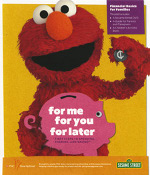Donate
|
Three Things We Can Learn from Elmo & Friends  How to raise money savvy kids Last winter, the Chicago Public Library Foundation received a generous grant of $223,000 from the PNC Foundation to implement the For Me, For You, For Later program aimed at educating young kids on spending, sharing and saving. The curriculum was designed by the Sesame Street Workshop for preschoolers, ages 3-5. Having a 3-year old of my own who loves Elmo, we decided to participate in one of the Family Workshops and learn how to start talking about basic financial concepts. Here are some things we picked up on that you too can do at home with your youngsters: Spending, Sharing and Saving - Introduce the ideas of spending, sharing and saving as good ways to make simple choices regarding money by creating jars for each concept.
Stories are the best ways to convey important concepts with our kids. Here are the Chicago Public Library's recommended books for introducing financial concepts at home. Tie in "choice" and "value", two additional concepts that compliment early financial literacy...Choice - When we give our kids choices, we're helping them build confidence. Learning to choose helps children become thoughtful decision makers. While giving kids choices, it's also important to point out the difference between Need vs. Want.
Value - This is a tougher concept to address with little ones. Value is related to the cost of items and the price people are willing to pay for them. By talking to your child about how important something is she can start to understand that items (and actions) have value.
Thank you to the PNC Foundation for funding this great program for children and families! Visit the Chicago Public Library for more information on For Me, For You, For Later programs. |
|
|
